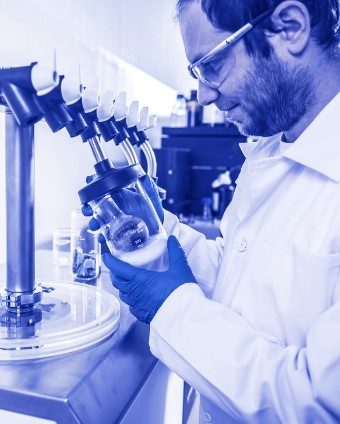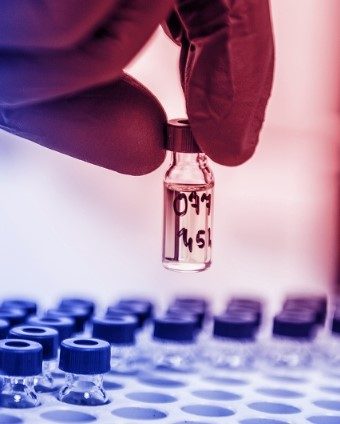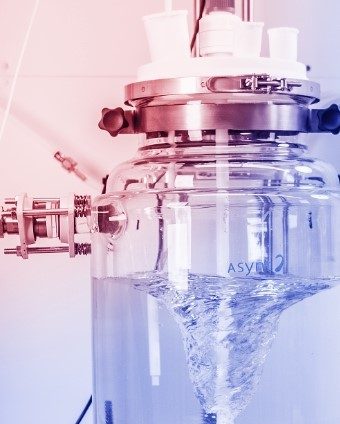Reagents of the month- April- Lawesson’s and Woollins’ reagents
Lawesson's reagent
Many biologically active substances contain a sulphur atom; however, it is usually not so easy to introduce sulphur into the molecule. Therefore, several thionation reagents were developed in the past. The previously used phosphorus sulphide was successively substituted with 2,4-bis(4-methoxyphenyl)-1,3,2,4-dithiadiphosphetane-2,4-dithione (known these days as Lawesson's reagent, Figure 1), which is used as a thionation reagent for transformations of carbonyl groups into the corresponding thiocarbonyl groups.
This compound was first prepared in 1956 (https://doi.org/10.1021/ja01600a058) and used as a thionation agent in 1967 (https://doi.org/10.1016/S0040-4039(00)90895-5). As a first reaction, the 2,4-bis(4-methoxyphenyl)-1,3,2,4-dithiadiphosphetane-2,4-dithione (Lawesson's reagent) was successfully utilized for the transformation of benzophenone to thiobenzophenone.

In 1978, Lawesson published a paper dealing with the synthesis of thioketone from ketones, which greatly expanded the use of this substance in organic synthesis. (https://doi.org/10.1002/bscb.19780870310). As a result, 2,4-bis(4-methoxyphenyl)-1,3,2,4-dithiadiphosphate-2,4-dithionate was named Lawesson's reagent.
Preparation of Lawesson's reagent
Lawesson's reagent is prepared from anisole and phosphorus sulphide (Org. Synth. 1984, 62, 158; DOI: 10.15227/orgsyn.062.0158). Other possible preparation is from anisole, red phosphorus and sulphur (Mazitova, F. N.; Khairullin, V. K. Zh. Org. Khim. 1981, 51, 958.).
Lawesson's reagent- Reaction mechanism
Lawesson's reagent is in equilibrium with reactive intermediate 2 (dithiophosphine ylide). This ylide then reacts with the carbonyl group to form thiaoxaphosphetane intermediate 3, which is further decomposed by a cycloelimination mechanism as a Wittig-analogous reaction. (https://www.organic-chemistry.org/namedreactions/lawessons-reagent.shtm)

Lawesson's reagent can convert an oxygen atom to a sulphur atom in a ketone, aldehyde, ester, amide, lactones, lactams, and quinones. Ketones, amides, and lactams react faster than corresponding esters (Figure 3). Typical conditions are using 2-3 equivalents of Lawesson's reagent in a nonpolar solvent (toluene, xylene) heated to 80-100 °C. One of many examples of the use of Lawesson's reagent is the thionation of N-methylpyrrolidone or cyclization reactions (Figure 3). (https://www.thieme-connect.de/products/ejournals/abstract/10.1055/s-2003-41447; https://pubs.acs.org/doi/10.1021/jo9016265).

Woollins' reagent
Similar to Lawesson's reagent, Wollins' reagent (2,4-diphenyl-1,3,2,4-diselenadiphosphetane 2,4-diselenide (Figure 4) is used for the transformation of the oxygen atom of the carbonyl group to selenium. This reagent is named after John Derek Woollins (https://doi.org/10.1002/chem.200500291).

Woollins' reagent is prepared by heating dichlorophenylphosphine and sodium selenide or by the reaction of the (PhP)5 with elemental selenium in toluene. Woollins' reagent is used to convert amides, acids and ketones to the corresponding selenium derivatives. In addition, Woollins' reagent also reacts with nitriles, alkenes and alkynes (Figure 5). (https://doi.org/10.1016/S0040-4039(01)01113-3; https://doi.org/10.1002/anie.200800572)

If you want to discover more about our services, discuss specific research (either with or without Lawesson's or Woollins' reagent, custom synthesis project or receive a proposal, please do not hesitate to write an email to Krystof Sigut at krystof.sigut@santiago-lab.com or reach him on the phone +420 776 750 591.
[vc_row][vc_column][insignia_section_heading title="Drop us a line" subtitle="We will respond as soon as possible, typically within 48 hours." align="text-center" c_margin_top="20" c_margin_bottom="20" add_icon="" font_weight="default" sub_font_weight="default"][contact-form-7 id="13965"][/vc_column][/vc_row][vc_row][vc_column][vc_empty_space height="80px"][vc_column width="1/1"]
OUR CASE STUDY
Scale-up to accelerate drug discovery
Our experience helped overcome development hurdles for potential cancer & mental health drugs.
Read moreEmpowering neuro research with pro-N6pA
Sigut Labs scaled up pro-N6pA production, simplifying AMPylation research & boosting accessibility.
Read moreADC development leaps with new linkers
Novel linker design expedited ADC advancement, leading to promising lead compounds faster.
Read moreLincomycin derivative scale-up
Over 30 g of the desired product with exceptional purity was obtained through our optimized procedure.
Read morePurifying 350 kg of vitamin K2 oil
Our innovative scale-up technology helped to reduce the client’s purification process from days to hours.
Read more
Custom synthesis
Providing for a custom synthesis of previously reported molecules using described synthetic procedures.

Contract research
Developing novel synthetic routes to provide undescribed compounds in organic, bioorganic, and medicinal chemistry.

Scale-Up
Helping you go from lab scales to an industrial scale by applying our cutting-edge instrumentation.

Our Experts


Partners & distributors











